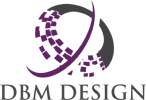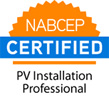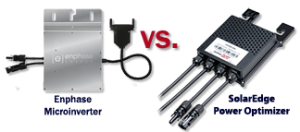We are frequently asked about the differences between a DC optimized system compared to a micro-inverted system and the considerations required in both. It is a tricky question, and there is a lot of “bad” information floating around from biased sources. We decided to write our own article to get the facts out there.
Optimizers
Optimizers, both the good and the bad. A lot of people are interested in these systems because they offer granular level system monitoring, and they also reduce the impact of shading on an array. They also offer the ability to use larger panels with higher wattage that can make a difference for commercial scale jobs but isn’t an issue for most residential considerations.
Disadvantages of using optimizers are that they require a fairly large minimum string size, around eight panels. This is limiting on smaller roof surfaces or when there are obstructions present, and it is complicated to run a jumper connection and can often void warranties.
From the installation side, we often hear the argument that optimizers are much easier to install. From experience, that is simply not true. There is an increase in efficiency, and cost-effectiveness that is often cited by optimizer manufacturers.
It is true that the optimizer itself is very efficient, but the strings still have to run through a string inverter. When you take into account their 98.8% efficiency and the inverter efficiency of around 97% the whole system ends up being about the same efficiency of a micro-inverted system. Not to mention there are significantly more electrical components required in a string/optimized system.
Micro-Inverters
Micro-Inverters offer the same level of monitoring and reduce the effects of shading. Also, they can be set up to automatically inform you if a panel or micro-inverter is malfunctioning, so you don’t have to monitor it constantly. We are sure that is something the optimizers will offer, eventually if they don’t have a similar solution already, but it is easy to do with Micros.
From an efficiency standpoint, they are rated the same as an optimizer and inverter setup, a little over 96%. Micro-Inverters have no minimum string size. That may not seem like a huge deal to everyone but for a designer or installer it is incredibly helpful to be able to toss in a few, small groups of panels in order to meet the customer’s expectations; both aesthetically and from a production standpoint.
There are certain situations in which a micro-inverter installation can be run directly into the main service panel without adding AC/DC disconnects or combiner boxes. It depends on what the jurisdiction allows and how they interpret the NEC regarding such systems. We have designed a few systems in which we were able to go directly from a roof-top J-box to the service. Those kinds of systems aren’t the norm, but show how cost effective a Micro-Inverted system can be. Optimizers can be more easily adapted to charge controllers and battery bank systems, but micro-inverter manufacturers are working on similar solutions.
Things get interesting with cost. Optimizers are significantly cheaper than micro-inverters, BUT that is before you take into account the cost of the string inverter necessary in an optimizer system. Micro-inverters and string inverter systems are usually pretty similar in terms of cost. They are both great pieces of technology, and they both have their place in the solar industry.


